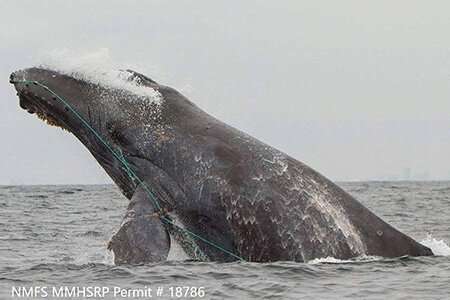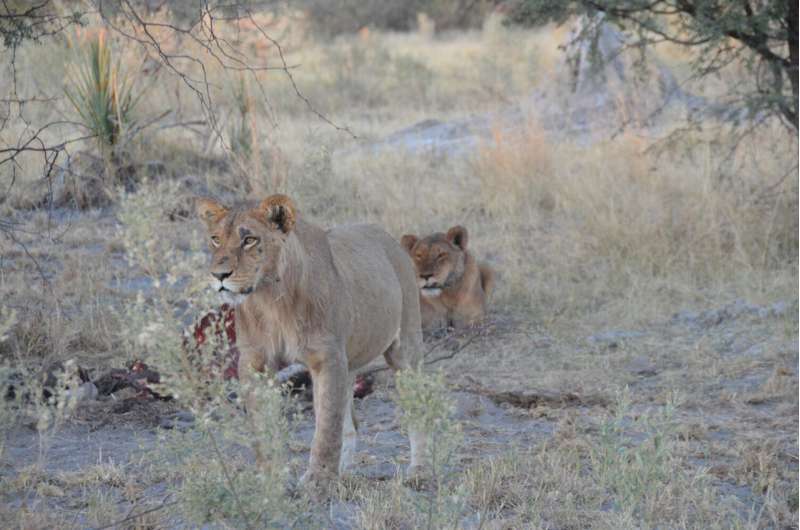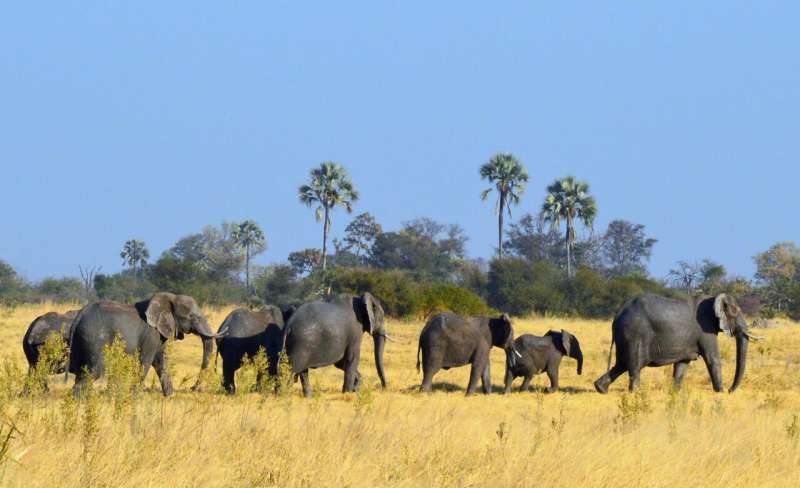Human-wildlife conflicts found to be rising worldwide with climate change

Research on the impacts of climate change often considers its effects on people separately from impacts on ecosystems. But a new study is showing just how intertwined we are with our environment by linking our warming world to a global rise in conflicts between humans and wildlife.
The research, led by scientists at the University of Washington’s Center for Ecosystem Sentinels and published in Nature Climate Change, reveals that a warming world is increasing human-wildlife conflicts.
“We found evidence of conflicts between people and wildlife exacerbated by climate change on six continents, in five different oceans, in terrestrial systems, in marine systems, in freshwater systems—involving mammals, reptiles, birds, fish and even invertebrates,” said lead author Briana Abrahms, a UW assistant professor of biology. “Although each individual case has its own array of different causes and effects, these climate-driven conflicts are really ubiquitous.”
To identify trends, the team pored over published, peer-reviewed incidents of human-wildlife conflicts and identified cases that were linked specifically to the effects of climate change. These include both short-term climate events—such as a drought—as well as longer-term changes. Warming in the Arctic, for example, is leading to loss of sea ice which has left polar bears short of food. They increasingly travel on land, sometimes entering human settlements and attacking people, as a recent incident in Alaska illustrates.

The new study shows that climate shifts can drive conflicts by altering animal habitats—like sea ice for polar bears—as well as the timing of events, wildlife behaviors and resource availability. It also showed that people are changing their behaviors and locations in response to climate change in ways that increase conflicts. Other examples of the effects of short- and long-term climate events include:
- Torrential floods in Tanzania led to more lion attacks after their usual prey migrated away from floodplains.
- Higher air temperatures in Australia triggered more aggressive behavior in eastern brown snakes, leading to more incidents of snake bites.
- Wildfires in Sumatra, Indonesia—triggered by El Nino—drove Asian elephants and tigers out of reserves and into human-inhabited areas, leading to at least one death.
- Disruption of terrestrial food webs during La Nina events in the Americas drove black bears in New Mexico and foxes in Chile into human settlements in search of food.
- Warmer air and ocean temperatures in a severe El Nino led to an increase in shark attacks in South Africa.
Most cases of human-wildlife conflict linked to climate involve a shift in resources—not just for wildlife, but also for people.
A majority of cases on land also involved a change in precipitation, which will continue to be affected by climate change. Many resulted in human deaths or injuries, as well as property damage.

In 2009, for example, a severe drought struck the western part of Tanzania’s Kilimanjaro Region. This reduced food supplies for African elephants, which in turn entered local fields to graze on crops—at times destroying 2 to 3 acres daily. Local farmers, whose livelihoods were directly threatened by the drought, at times resorted to retaliatory killings of elephants to try to mitigate these raids.
“Identifying and understanding this link between human-wildlife conflicts is not only a conservation issue,” said Abrahms. “It is also a social justice and human safety issue.”
These types of conflicts are likely to rise as climate change intensifies, particularly as mass migrations of people and wildlife increase and resources shift.
But, it doesn’t have to be all bad news.
“One major motivation in studying the link between climate change and human-wildlife conflict is finding solutions,” said Abrahms. “As we learn about specific incidents, we can identify patterns and trends—and come up with interventions to try to address or lessen these conflicts.”

Some interventions may be as simple as public-awareness campaigns, such as advising residents of the American Southwest during La Nina years to carry bear spray on a hike. Governments can also plan for times when extreme climate events will bring people and wildlife into closer contact. Botswana, for example, has funds in place to compensate herders and ranchers for drought-induced attacks by wildlife on livestock, often in exchange for pledges not to engage in retaliatory killings of wildlife.
“We have effective drought forecasts now. So, governments can engage in fiscal planning for mitigating conflicts ahead of time,” said Abrahms. “Instead of a ‘rainy day’ fund, have a ‘dry day’ fund.”
To Abrahms, one success story of note lies in the waters of the eastern Pacific. In 2014 and 2015, a record number of humpback and blue whales became ensnared in fishing lines off the California coast. Research later showed that an extreme marine heat wave had pushed whales closer to shore, following their primary food sources. California regulators now adjust the start and end of each fishing season based on climate and ocean conditions in the Pacific—delaying the season if whales and fishing gear are likely to come into close contact.
“These examples show us that once you know the root causes of a conflict, you can design interventions to help both people and wildlife,” said Abrahms. “We can change.”
More information:
Briana Abrahms, Climate change as a global amplifier of human–wildlife conflict, Nature Climate Change (2023). DOI: 10.1038/s41558-023-01608-5. www.nature.com/articles/s41558-023-01608-5
Citation:
Human-wildlife conflicts found to be rising worldwide with climate change (2023, February 27)
retrieved 27 February 2023
from https://phys.org/news/2023-02-human-wildlife-conflicts-worldwide-climate.html
This document is subject to copyright. Apart from any fair dealing for the purpose of private study or research, no
part may be reproduced without the written permission. The content is provided for information purposes only.
For all the latest Science News Click Here
For the latest news and updates, follow us on Google News.

